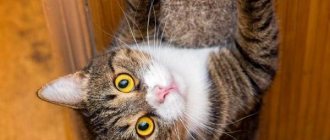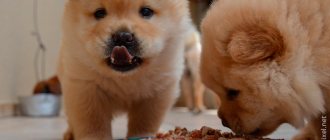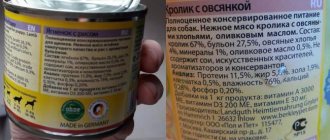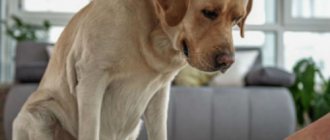Immediately after birth, newborn kittens feed on mother's milk, but over time, the needs of the babies' bodies grow and they require other food. Preparing healthy and tasty meals for offspring is too troublesome, so most owners choose the simplest option - dry food. But in this case, the owners are faced with another problem - transferring a baby who does not know how to chew solid food to a finished product. How to accustom a kitten to dry food without harming its health?
How to accustom a kitten to dry food?
Benefits of dry food
Every person who has become the owner of a furry ball wonders what to feed. Natural products or drying. Everyone understands that animals are not fed food from the table. It is necessary to prepare separately, carefully monitoring so that the diet is balanced. It is difficult to do this without having certain skills.
Veterinarians recommend feeding your pet a commercial diet for a number of reasons:
- The composition is balanced. Everything is here in the right quantity - vitamins, minerals, proteins, fats, carbohydrates.
- It saves time, plus it’s easy to calculate the volume of portions.
- Dry granules clean teeth from plaque, thereby preventing oral diseases.
- Wide choice - there are different classes of food, products by age, for a specific breed, hypoallergenic, preventive, therapeutic, for weight gain, for weight loss.
Optimal age to change a kitten's diet
As soon as they are born, kittens find the strength to crawl to their mother’s nipple to take their first sips of colostrum. At birth, kittens' intestines are sterile, meaning they cannot process any food. Colostrum is rich in beneficial bacteria that help newborn kittens process their mother's milk.
From the moment of birth until approximately one month of age, kittens feed only on their mother's milk. As babies grow up, they begin to smell. At about one month of age, kittens begin to be attracted to the smells of adult food. As soon as the babies begin to leave the nest, the breeder introduces supplementary food into their diet.
Depending on the preferences of the breeder, the kittens begin to be supplemented with:
- Boiled minced meat, low-fat dairy products.
- Canned industrial food for kittens.
After supplementary feeding is introduced, kittens begin to grow more actively and quickly expand their diet. All this time, the baby’s digestive system adapts to digesting new food. With the correct, gradual introduction of supplementary feeding, no negative effects on the gastrointestinal tract are observed. If the gastrointestinal tract is hypersensitive, kittens may develop diarrhea.
Note! Many purebred kittens have a hereditary predisposition to sensitivity of the digestive system. If you decide to buy a British or Scots dog, be sure to consult with the breeder about the diet, possible allergies and gastrointestinal problems.
Digestion of a kitten at 2–3 months
At 2 months, kittens begin to actively explore the world and try it out. In addition to the function of determining the edibility of an object, chewing and licking everything around has an additional function. Bacteria constantly enter the kitten’s body, and the immune system fights them.
Little kittens receive immunity from their mother, or rather, they receive antibodies from her milk. As soon as the kittens start supplementing, they begin to develop their own immunity. By the way, the mother’s immunity will protect babies up to 3 months of age.
At 3 months, kittens receive their first worm prevention and vaccination. At this stage, the already established functioning of the gastrointestinal tract may fail. Vaccination involves introducing a weakened virus into the body, followed by the development of immunity to it. After vaccinations, the kitten may experience a slight increase in base temperature and gastrointestinal upset.
Digestion of a kitten at 4 months
At 3–4 months, kittens usually move to a new home. Theoretically, the baby’s body will be ready for a change in diet, however, it is important to consider that the functioning of all body systems is greatly affected by stress. Weaning, moving to a new home, and other stressful situations can affect the functioning of the gastrointestinal tract.
To reduce risks, new owners are not recommended to change the kitten’s diet and feeding schedule during the adaptation period. As practice shows, three-month-old kittens fully adapt to their new housing within 7–10 days. Before buying a kitten, be sure to consult with the breeder, find out what supplementary food the kittens received and stock up on the necessary products for the next two weeks.
Advice: if the kittens received a natural diet, consult the breeder about the choice of food. Perhaps your baby has allergies, diabetes, or other hereditary factors that you need to know about.
At what age should dry food be introduced?
Up to 1-1.5 months, babies are fed with mother's milk or, if they are bottle-fed, then with special formulas. Towards the end of the first month of life, baby teeth begin to emerge. Kittens no longer have enough mother's milk, especially if the litter is large. By this time, the cat itself begins to avoid young animals, so you can try to switch the kitten to dry food. Moreover, every baby strives to chew and taste something.
Artificial kittens should not be given dry granules until they reach 2.5 months. An immature digestive system will react negatively. The gastrointestinal tract is ready to digest industrial feed at the age of 2.5-3 months.
It is necessary to decide what the cat will eat - natural food or ready-made food - at exactly 1.5 months.
Before transferring a kitten to dry food, it is recommended to start complementary feeding with raw meat (turkey, chicken, rabbit). This needs to be done so that the baby’s stomach develops enzymes for processing meat products. Then you can switch to the factory diet. But you shouldn’t start complementary feeding right away with drying. To process it, completely different enzymes are required. For some time it is better to use it as an intermediate wet food: pates, canned food, pouches with pieces.
Gradual translation method
If your cat has never tried dry food, you shouldn't start with drastic measures. It is more correct to act gradually, unobtrusively offering unusual food and monitoring the animal’s reaction. For example, during feeding, place a small saucer filled with dry granules next to the bowl. Perhaps the pet itself will show interest in the new product and prefer it to its usual dishes.
If this does not happen, try first filling the granules with water and mashing them a little with a fork. This way the aromatic properties of the food become more pronounced, and its consistency becomes closer to natural food. Then you can gradually add dry granules into the bowl, increasing their volume every day and at the same time reducing the proportion of soaked food.
Where to start training
If the kitten itself, following the mother cat, has not eaten dry croquettes, it will take a little time to accustom it. In this case, you need to act consistently, then the training process takes from 5 days to 2 weeks. You can use one of 3 options.
Soak the granules in water
Croquettes should be soaked in warm boiled water. To do this, measure out the required amount of granules and add water, close to hot (50-60 degrees). Take enough water to cover the croquettes. To speed up the process, you can grind the granules in a blender.
What to do if your cat refuses dry food
The main thing that should not be done in such situations is to force animals to eat or leave them without other food if retraining has just begun.
But you can attract attention in other ways:
- You can add some of your favorite food to the new mixture. The portion can be mixed so that it only acquires a smell, or you can add more fish, liver, etc. The amount can be determined experimentally: when food becomes attractive, a hungry animal begins to become impatient and starts eating.
- Don't be afraid to mix natural and dry ingredients. Good producers prepare their feed from meat, offal, and fish of normal quality. Holistic or premium mixtures do not even cause allergies, and troubles associated with their use can be caused by improper storage (for example, getting wet and mold development).
- Soaked granules should not be left in food containers. If water gets on them, mold will develop within a few hours, and the cat (and especially young animals) can become poisoned. Before feeding again, you need to thoroughly wash the bowl and replace the water. Pour a portion of food into a dried container and feed the animals.
How much feed to give
Each manufacturer places recommendations on the daily food intake on the bag of croquettes and on its website, which depends on weight and age. It is important to follow these recommendations.
You will need to weigh the little cat. The owners know the age of the kitten. If the animal is taken from the street or purchased at the market, then it is better to ask the veterinarian to determine the age of the kitten - whether it has reached 20 weeks (5 months) or not.
Next, check the manufacturer’s data, where the norm is calculated per 1 kg of weight. Depending on the company, the daily norm for a kitten up to 20 weeks can be 48 - 60 grams. per 1 kg. Thus, for a kitten up to 5 months, 48 grams per day is enough to cover all energy costs and replenish the supply of nutrients.
Animals that have reached six months of age require less feed - an average of 30 grams. per 1 kg. By 12 months, the pet is considered an adult and its norm is the same as that of an adult animal (see manufacturer’s recommendations).
Calculation example:
- Kitten weight 500 g. or 0.5 kg.
- The kitten is 3 months old.
- Calculation: 0.5 kg * 48 g. (norm) = 24 g. And this is for the whole day.
The daily dose is divided into equal parts and given to the pet in several feedings. The younger the cat, the more often it is fed - up to 4-6 times a day, but in small portions. If the owner fills the bowl with a tubercle, then it is likely to make the wrong conclusion that the kitten is not eating. That's right - he just can't eat that much.
How to accustom an adult cat to dry food: basic methods, action plan
When a person adopts not a kitten, but an adult cat, sometimes he is faced with the fact that the animal flatly refuses to eat dry food. Most often this happens because when the cat lived with the previous owner or on the street, she got used to eating something else. Volunteers at the Murkosha shelter often encountered a similar problem, and over time, a certain strategy was developed that helps transfer the cat to dry food. This article will discuss exactly how to accustom a cat to dry food.
Why doesn't my cat want to eat dry food?
Before you train an animal, you need to understand exactly why it refuses to eat dry food.
1. Habit. If a cat lives with a person, it gets used to the lifestyle and diet of its owner. Such habits are difficult to eradicate because they begin to work at the level of reflexes.
2. Wrong smell. Often, cats don't like a certain type of food simply because it doesn't smell like natural food. If, for example, a cat is used to catching mice or eating meat from the owner’s table, after sniffing the food, she will understand that it is a completely different product and will begin to refuse.
3. Consistency and temperature. These two parameters are very important for a cat. And if he doesn’t like the food to be cold or too large, the cat will refuse to eat it.
How is food better than natural products?
Many owners do not want to accustom their animals to dry food, believing that it is worse than natural meat, fish, and vegetables. Such owners are convinced that the food does not contain vitamins. In fact, it is in the food that you can find all the nutrients and minerals that animals need.
Read more: “Cat food: how to choose the right one”
Nutrition experts say that dry food has many advantages compared to natural food:
- balance – the food contains a sufficient amount of fiber, vitamins and the correct ratio of proteins, carbohydrates, fats;
- ease of determining the norm - the amount of food is determined by the age and weight of the cat;
- no risk of poisoning if stored correctly;
- a wide selection of food - medicinal, for different breeds and ages.
Features of accustoming to dry food
To switch your cat to dry food, you need to consider several important factors. Since this procedure was carried out dozens of times at the Murkosha shelter, volunteers identified the main aspects that are worth paying attention to.
1. Choosing the right food. There is an opinion that cats will eat whatever is given to them. The main thing is to force it. But that's not true. There are many foods on the market - with different smells, textures, and granule sizes. If your cat refuses to eat one type of food, keep looking. Most likely, she will show at least interest in one of them. Small packages of 400 g are good for testing.
2. Persistence and patience. When they begin to accustom a cat to food, it resists, tries to force pity on it, and gets offended. In such a situation, the owner needs to be patient, but not give up.
3. Gradual translation. You should not immediately exclude all familiar foods from the diet and give your cat a choice: either eat the food or starve. It is necessary to gradually change the menu, simultaneously reducing portions of meat/fish and increasing portions of food. Initially, the feed should be about 10%, within two weeks the 100% mark is reached.
4. Calm, only calm. Cats should never be scolded. Firstly, the animal does not understand what it is doing wrong. Secondly, if a cat begins to associate new food with screaming and anger, he will never perceive it as something good.
Recommendations for switching to dry food
Before switching your cat to dry food, you need to monitor how much water she drinks. If the cat's body does not receive enough water, it may develop problems with the excretory system. A bowl of clean water should always be present at the feeding area.
In order for the cat to get used to the new food, you need to give it 10 to 15 days. For most adult cats, two weeks are enough to get used to a new diet. At the first stage, you should not add more than 10% of the daily value to the diet. If you overdo it and exclude too many familiar foods, the animal may refuse to eat at all.
On the other hand, you should not give in if the cat is trying to pity the owner. We must remember that cats are very smart and stubborn animals that do everything to the last to ensure that the owner does exactly what they want. But, if you succumb to your pet’s tricks, getting used to dry food can take a long time.
Read more: “How to feed a kitten with a syringe: methods, portions, food, regimen”
To prevent your cat from overeating and starving when the daily food intake reaches 100%, you need to read the recommendations that are on each pack. It indicates exactly how much food should be given to a cat or male, depending on their weight and age.
After the cat has started eating a certain food, you need to try to purchase this particular product for him. If you change the food, the cat may start a boycott again. Any changes must occur gradually.
Another important rule is that owners need to forget about feeding the cat from the table. When he has already switched to dry food, he should only eat that.
If you adhere to these simple rules and do not forget that you need to give your cat time to get used to the new diet, soon the animal will happily start eating dry food and will no longer beg for food from its owners.
Well, for those who have not yet found a furry happiness, the Murkosha shelter invites you to come to us and choose a cat for yourself that will become true friends for you. All our animals are accustomed to dry food, so new owners do not have to deal with retraining. Instead, they will be able to enjoy communication with a purring friend, take funny photos and share news with friends.
Scheme for transferring to a dry diet
A common scheme for transferring a kitten from natural food to dry food is designed for 14 days. The goal is to increase the amount of dry granules every day, gradually replacing other foods.
- Start by replacing approximately 1/4 of the daily value with drying in the first 4 days. So, if a kitten eats 100 grams per day. food (natural or canned), then ¼ part is 25 grams. It needs to be removed. 75 g left. usual food. Also separate ¼ of the daily intake of dry food (see the manufacturer). If it is determined that the daily dose of drying is 24 grams, then the fourth part is measured, i.e. 6 gr.
Train your cat to eat dry food within a week
If your pet has previously eaten only natural food and canned meat, dry kibble may seem inedible to him. Therefore, there is no need to start with radical measures. Try offering food unobtrusively, presenting it as a treat. For example, handgive during play, in a situation where the cat usually receives a reward. This preparation will help your pet form positive associations with the smell and texture of the new product. Next, we proceed directly to training.
On the first day, serve your cat his usual food with the addition of dry granules in a 4:1 ratio. If he perceives this normally, after a couple of days the share of “drying” can be increased, while simultaneously reducing the amount of other food. And so on until he completely switches to a new type of food. The process may take a week or two, but the animal will not experience stress or digestive problems.
What to consider when training
To avoid mistakes when switching to a new diet, you should adhere to the following recommendations:
- Some people are guided by the principle: “if he wants, he will eat.” This is the wrong tactic, which can lead to future health problems. You cannot force a kitten to eat dry food or scold it.
- It is important to ensure that your pet drinks water. There is no water in the granules, and for them to soften in the body, you need a lot of water. Therefore, the bowl should always be filled with clean water. When leaving home for a long time, it is better to leave several containers of water, in case the kitten turns over one of them.
- If croquettes are mixed with wet food, then after each meal, the remains are thrown away. This mixture quickly weathers, deteriorates and acquires an unpleasant odor. An option is to learn how to calculate the dosage of servings.
- It is correct to store croquettes in a well-closed bag or box. When exposed to air, the granules oxidize, acquiring an unpleasant odor for the animal. A kitten already accustomed to drying will refuse such a “treat”.
Possible problems when accustoming a kitten to dry food
It happens that a kitten, who has already begun to get used to dry food, suddenly refuses it. This often confuses owners. But most likely the reason lies in one of the following:
1. The kitten does not have enough clean drinking water. If a kitten eats dry food, then it should consume much more water than with other types of feeding (natural food, wet food). With a dry diet, the pet must have unlimited access to drink, since a large amount of moisture is spent on softening the granules.
Read about what water should be like for your pet: Can cats drink tap water?
2. You should not mix old and new portions of food, especially if the proportion of dry food is not yet 100% and all the food is in one bowl. The food left over from the previous meal acquires an unpleasant smell for the kitten (especially if the food tends to spoil quickly, and this includes, for example, wet food), so he refuses it. To prevent this from happening, you should:
- correctly calculate the serving volume; - wash the cat's bowl after feeding; — offer other “meals,” including cat treats, in separate dishes.
3. The problem may also be due to improper storage of feed. Factory packaging that does not have special fastenings is not very suitable for storage after opening, since the food can deteriorate and the aroma is lost. And food that does not smell is no longer food for a kitten. The solution here is a special container with a tight lid for storing food, which can be bought in any household goods department.
What food to choose
Everyone knows that there are several classes of food and species within each class. A cheap, economy option is a recipe for disease and an underdeveloped skeleton, which ultimately shortens the cat’s life expectancy.
To accustom a kitten to ready-made food, you need to use only super premium food or holistic food. This class includes products from the brands Orijen, Acana, Applaws, Grandin, Natural Greatness. It is advisable to use a product designed specifically for kittens with small pellets. It is also acceptable to feed pellets to pregnant and lactating cats. This product is high in calories and contains many additives for proper development.
Once the kitten has switched to dry food, it is no longer possible to “diversify” the menu with natural food. You can give canned food and pates, but not at the same feeding with croquettes.
How to find out if the food is suitable
At the stage of accustoming a cat to new food, the owner should be alert to the following alarming symptoms in the pet:
- stool disorder;
- decreased appetite;
- lethargy;
- discharge from the eyes, which may indicate an allergy;
- aggressiveness.
It is possible to assess whether the food really suits your pet well only after a few weeks. During this period, you need to pay attention to the condition of the coat and skin, the amount of urine and the quality of the stool. If your cat goes to the litter box to urinate less times a day than usual, you need to give your pet more water (if you can’t encourage your cat to drink more, you can alternatively add a canned product from the same manufacturer to the dry diet).
Good quality dry food contains all the substances necessary for your pet, so additional feeding is not required during the transition to dry food. Particular attention should be paid to super premium and holistic foods that are balanced in minerals and vitamins.
Super premium and holistic food supplies the animal with all the substances, vitamins and minerals necessary for proper development
How to choose the right product?
In order not to put the health of a kitten or adult cat at risk, before choosing a specific brand, it is important to first read the reviews of owners and veterinarians. In addition, you should take into account the pet’s age, individual characteristics of the body, the presence of certain diseases, and level of activity.
Usually, fluffies switch to Royal Canin without any problems.
On the pet supply market, dry food for sterilized, pregnant, and sick animals is sold separately. To avoid making a mistake in your choice, it is recommended to consult a veterinarian. Do not forget to strictly follow the dosage indicated on the package, corresponding to a certain age.
The cat can painlessly learn to eat new food from the following brands:
- Royal Canin;
- "Purina ProPlan";
- "Akana";
- "Hills";
- Eukanuba;
- Arden Grange;
- 1st Choice;
- ProNature Holistic.











